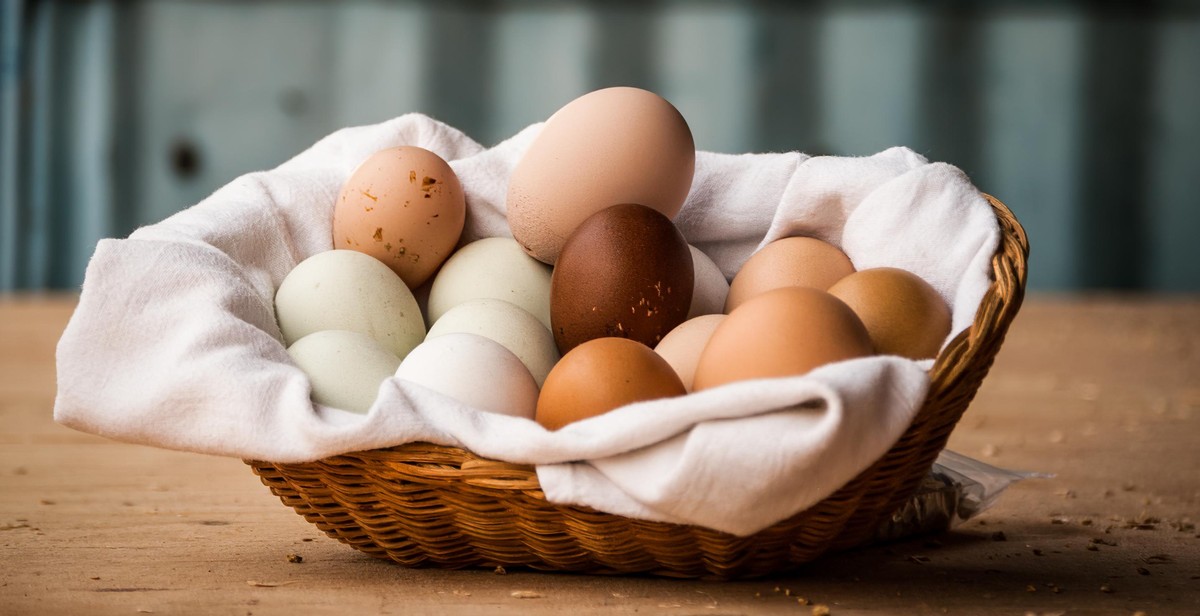How to Brew Your Own Craft Beer at Home
Craft beer has become increasingly popular over the years, with enthusiasts seeking out unique and flavorful brews. While it may seem daunting to try and recreate these artisanal beers at home, brewing your own craft beer is actually quite achievable with the right equipment and knowledge.
Benefits of Brewing Your Own Beer
Brewing your own beer has a range of benefits, including:
- Cost savings compared to buying craft beer at a store or bar
- The ability to customize the flavor and style of your beer
- A fun and rewarding hobby
- A way to impress your friends and family with your brewing skills
The Basics of Homebrewing
Before you can start brewing your own craft beer, it’s important to understand the basics of homebrewing. This includes:
- Choosing the right equipment, such as a brewing kettle, fermenter, and bottling equipment
- Understanding the ingredients used in beer, including malt, hops, and yeast
- Following a recipe or creating your own beer recipe
- Sanitizing your equipment to prevent contamination
- Monitoring the brewing process, including temperature and fermentation time
Getting Started
Ready to start brewing your own craft beer at home? Check out our step-by-step guide for beginners on how to brew your own beer.
Benefits of Homebrewing
Homebrewing has gained popularity in recent years as more people seek to enjoy the taste and experience of craft beer. There are several benefits of homebrewing, including:
Cost Savings
One of the most significant advantages of homebrewing is the cost savings. Brewing your beer can save you a lot of money compared to buying beer from a store. The initial investment in equipment may seem high, but over time, it will pay off. You can purchase ingredients in bulk and reuse equipment, which makes the cost of each batch of beer significantly cheaper than buying beer.
Customization
Another benefit of homebrewing is the ability to customize your beer to suit your taste. You can experiment with different ingredients, flavors, and brewing techniques to create unique beer. This customization allows you to make beer that is tailored to your preferences, which is not always possible with commercially available beer.
Quality Control
When you brew your beer, you have complete control over the quality of the beer. You can ensure that the ingredients used are fresh and of high quality. You can also control the brewing process, ensuring that the beer is brewed to your desired level of quality. This level of quality control is not always possible with commercial beer, which may contain additives or be brewed using low-quality ingredients.
| Benefits of Homebrewing |
|---|
| Cost Savings |
| Customization |
| Quality Control |
Overall, homebrewing is an excellent way to enjoy craft beer while saving money, customizing your beer, and ensuring the quality of the beer you consume.

Equipment Needed
Before you start brewing your own craft beer at home, you will need to invest in some essential equipment. These include:
Brew Kettle
A brew kettle is a large pot used for boiling the wort and hops. It should be made of stainless steel or aluminum and have a capacity of at least 5 gallons. The size of the pot will depend on the batch size you plan to make.
Fermentation Vessel
A fermentation vessel is where the wort is transformed into beer. It should be made of food-grade plastic or glass and have a capacity of at least 6 gallons. A lid and an airlock are also needed to ensure a proper seal and to allow carbon dioxide to escape during fermentation.
Airlock
An airlock is a small device that fits into the lid of the fermentation vessel. It allows carbon dioxide to escape during fermentation while preventing oxygen and other contaminants from entering the vessel. There are different types of airlocks, but a three-piece airlock is the most common and affordable.
Siphon
A siphon is used to transfer the beer from the fermentation vessel to the bottling bucket or directly into bottles. A food-grade plastic siphon is recommended, along with a racking cane and tubing.
Bottles and Caps
Once the beer is ready, it needs to be bottled and carbonated. You will need about 50 12-ounce bottles for a 5-gallon batch. Glass bottles are preferred, but plastic bottles can also be used. You will also need bottle caps and a capping tool to seal the bottles.
Investing in quality equipment will make your brewing process smoother and more enjoyable. With the right tools, you can brew your own delicious craft beer at home.

Ingredients
When it comes to brewing your own craft beer at home, there are four main ingredients you need to consider: grains, hops, yeast, and water.
Grains
Grains provide the fermentable sugars that yeast will eventually turn into alcohol. The most common grain used in beer brewing is barley, but other grains like wheat, rye, and oats can also be used. The grains are first malted, which means they are soaked in water and allowed to germinate. This process activates enzymes in the grain that will later break down the starches into fermentable sugars. The malted grains are then kilned to stop the germination process and develop the flavor profile of the grain.
Hops
Hops are the flowers of the hop plant and are used to add bitterness, flavor, and aroma to beer. Hops also have antimicrobial properties that help preserve the beer. There are many different varieties of hops, each with their own unique flavor and aroma profiles. Hops are added at different times during the brewing process to achieve different effects.
Yeast
Yeast is the microorganism that does the heavy lifting in beer brewing. Yeast eats the fermentable sugars produced by the grains and produces alcohol and carbon dioxide as byproducts. There are two main types of yeast used in beer brewing: ale yeast and lager yeast. Ale yeast ferments at warmer temperatures and produces fruity, spicy flavors, while lager yeast ferments at cooler temperatures and produces a cleaner, crisper flavor profile.
Water
Water is an often-overlooked ingredient in beer brewing, but it plays a crucial role in the final product. Water can affect the pH of the mash (the mixture of grains and water), which can affect the flavor of the beer. Different styles of beer have different water profiles, and some brewers will even adjust the mineral content of their water to achieve a specific flavor profile.
| Grain | Flavor Profile | Examples of Beer Styles |
|---|---|---|
| Barley | Malty, Bready | Pale Ale, Stout |
| Wheat | Light, Crisp | Hefeweizen, Witbier |
| Rye | Spicy, Earthy | Rye IPA, Roggenbier |
| Oats | Smooth, Creamy | Oatmeal Stout, NEIPA |
The Brewing Process
Before we dive into the brewing process, it’s important to note that brewing beer at home requires some specialized equipment and ingredients. However, once you have everything you need, the process can be broken down into four main steps: mashing, boiling, fermenting, and bottling.
Mashing
The first step in brewing beer is mashing. This is where you mix crushed grains with hot water in a process known as “mashing in.” The mixture is then left to rest for about an hour, allowing the enzymes in the grains to break down the starches into sugars. This sugar-rich liquid is known as wort.
Boiling
After the mash, the wort is transferred to a large pot, where it is brought to a boil. This is where hops are added to the mixture, providing bitterness and flavor to the beer. The boil can last anywhere from 60 to 90 minutes, depending on the recipe.
Fermenting
Once the boil is complete, the mixture is cooled and transferred to a fermentation vessel. Yeast is added to the wort, and the mixture is left to ferment for about a week. During this time, the yeast consumes the sugars in the wort, producing alcohol and carbon dioxide.
Bottling
After fermentation is complete, the beer is ready to be bottled. Priming sugar is added to the beer, which will create carbonation in the bottle. The beer is then transferred to bottles and left to condition for a few weeks. Once conditioned, the beer is ready to be enjoyed!
| Step | Description |
|---|---|
| Mashing | Mixing crushed grains with hot water to create wort |
| Boiling | Adding hops to the wort and boiling for 60-90 minutes |
| Fermenting | Adding yeast to the mixture and allowing it to ferment for about a week |
| Bottling | Adding priming sugar to the beer and transferring it to bottles for conditioning |

Tips for Success: How to Brew Your Own Craft Beer at Home
Making your own craft beer at home can be a fun and rewarding experience. However, it requires attention to detail and careful execution to ensure a successful brew. Here are some tips to help you achieve success:
Sanitation
Sanitation is crucial when it comes to brewing beer. Any bacteria or contaminants can ruin the flavor and quality of your beer. Make sure to thoroughly clean and sanitize all of your equipment, including fermenters, bottles, and tubing, before and after each use. Use a no-rinse sanitizer, such as Star San, to ensure that all surfaces are properly sanitized.
Temperature Control
Temperature control is also important for brewing beer. Yeast is sensitive to temperature, and if it gets too hot or too cold, it can die or produce off-flavors. Keep your fermentation vessel in a cool, dark place with a consistent temperature between 65-75°F. Use a thermometer to monitor the temperature and make adjustments as necessary.
Patience
Brewing beer takes time and patience. Don’t rush the process and try to bottle or keg your beer too soon. Allow your beer to ferment for at least two weeks, or until the specific gravity has stabilized. Then, give it another week or two to condition and carbonate in the bottle or keg. Patience will pay off in the end with a better-tasting beer.
- Clean and sanitize all equipment before and after each use
- Keep fermentation vessel in a cool, dark place with a consistent temperature between 65-75°F
- Allow beer to ferment for at least two weeks and condition for another week or two
By following these tips, you can increase your chances of success when brewing your own craft beer at home. Remember to pay attention to the details and enjoy the process!

Conclusion
Homebrewing is a fun and rewarding hobby that allows you to create your own unique craft beer. By following the steps outlined in this article, you can make a delicious brew right in the comfort of your own home.
Remember the Basics
Before you start brewing, make sure you have all the necessary equipment and ingredients. Keep everything clean and sanitize your equipment properly to avoid contamination. Follow the recipe closely and take accurate measurements to ensure consistency.
Experiment and Have Fun
Don’t be afraid to experiment with different ingredients and techniques. Try out new recipes and tweak them to your liking. Homebrewing is all about creativity and having fun.
Share Your Beer
One of the best things about homebrewing is sharing your beer with friends and family. Get feedback on your brews and use it to improve your skills. You can even consider entering your beer into competitions to see how it stacks up against other homebrews.
Keep Learning
There’s always room to learn more about homebrewing. Attend classes or workshops, read books and articles, and join online communities to connect with other homebrewers and share tips and advice.
With practice and patience, you can become a skilled homebrewer and create your own delicious craft beer. So, what are you waiting for? Grab your equipment and start brewing!
